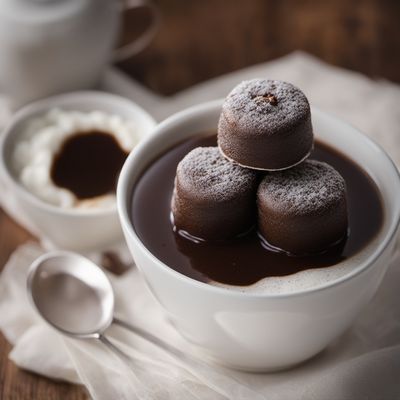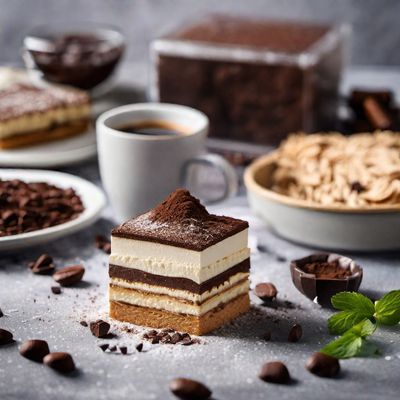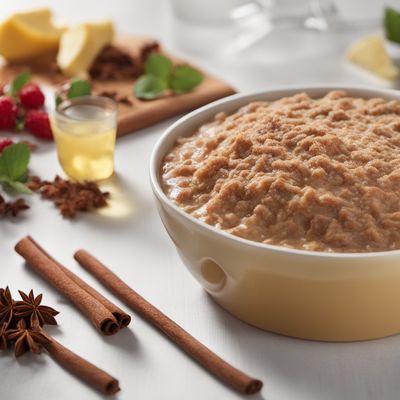
Ingredient
Coffee (strong) beverage
"Bold Brew: Unleashing the Power of Strong Coffee"
Strong coffee is characterized by its intense flavor, which is achieved through a higher concentration of coffee grounds or a longer brewing time. It boasts a rich, full-bodied taste with a deep aroma that can vary depending on the type of beans used. The texture of strong coffee is smooth and velvety, often accompanied by a slight bitterness. Its appearance ranges from a dark brown to black color, with a thick layer of crema on top when brewed properly.
Origins and history
Coffee has a long and fascinating history, originating from the highlands of Ethiopia in the 9th century. It quickly spread across the Arabian Peninsula and became an integral part of Islamic culture. From there, coffee cultivation and consumption expanded to Europe, eventually reaching the Americas. Today, coffee is grown in various regions worldwide, with each region contributing its unique flavors and characteristics to the global coffee culture.
Nutritional information
Strong coffee is low in calories and contains no fat or cholesterol. It provides a moderate amount of caffeine, which can enhance alertness and improve cognitive function.
Allergens
Coffee is generally not associated with common allergens, but some individuals may experience sensitivity or intolerance to caffeine.
How to select
When selecting strong coffee, opt for freshly roasted beans or ground coffee to ensure maximum flavor. Look for a roast date on the packaging, and choose whole beans if possible to preserve freshness. Consider the origin and roast level based on your personal preference for flavor intensity.
Storage recommendations
To maintain the freshness of strong coffee, store it in an airtight container in a cool, dark place away from moisture, heat, and light. Avoid storing it in the refrigerator or freezer, as the moisture can affect the flavor.
How to produce
To produce strong coffee at home, use a higher coffee-to-water ratio or extend the brewing time. Experiment with different brewing methods such as French press, espresso, or pour-over to achieve the desired strength.
Preparation tips
For a strong coffee beverage, use a higher coffee-to-water ratio, such as 1:15 or 1:16, depending on your preference. Adjust the grind size to match your brewing method, aiming for a medium to coarse grind for methods like French press or a fine grind for espresso. Experiment with different brewing techniques and equipment to find the perfect balance of strength and flavor.
Culinary uses
Strong coffee is commonly enjoyed as a standalone beverage, but it also serves as a versatile ingredient in various culinary creations. It can be used to enhance the flavor of desserts like tiramisu, chocolate cakes, or ice creams. Additionally, strong coffee can be incorporated into savory dishes such as marinades for meats or in barbecue sauces to add depth and complexity.
Availability
Coffee is widely available in most regions of the world, with major coffee-producing countries including Brazil, Colombia, Vietnam, Ethiopia, and Honduras.
More ingredients from this category

Coffee with milk or cream
The Perfect Blend of Boldness and Creaminess

Coffee (weak strength) beverage
A Gentle Awakening

Instant coffee (beverage)
The Essence of Caffeine in a Cup

Iced coffee
Chilled Caffeine Delight

Coffee espresso (beverage)
The Elixir of Energy

Coffee beverage decaffeinated
The Art of Decaffeination: Unveiling the Secrets of Coffee

Coffee (average strength) beverage
The Energizing Elixir
Recipes using Coffee (strong) beverage

Balkan Coffee Delight
Caffeinated Bliss: Balkan Coffee Delight

Norwegian-style Alaisa Fa'apopo (Coconut Rice Pudding)
Nordic Delight: Creamy Coconut Rice Pudding with a Norwegian Twist

Latvian Tiramisù
Riga Delight: Latvian Tiramisù with a Baltic Twist

Creamy Norwegian Rømmegrøt
Velvety Delight: Creamy Norwegian Rømmegrøt